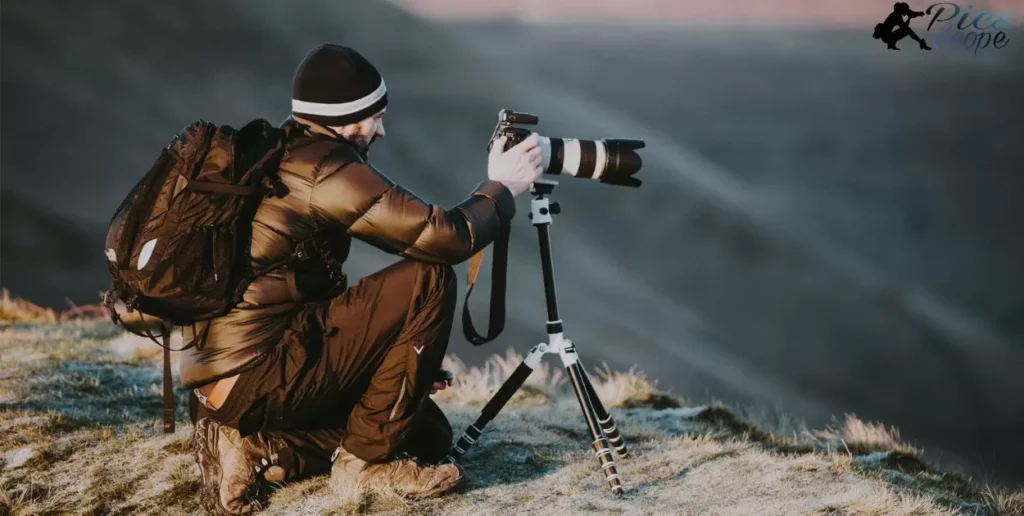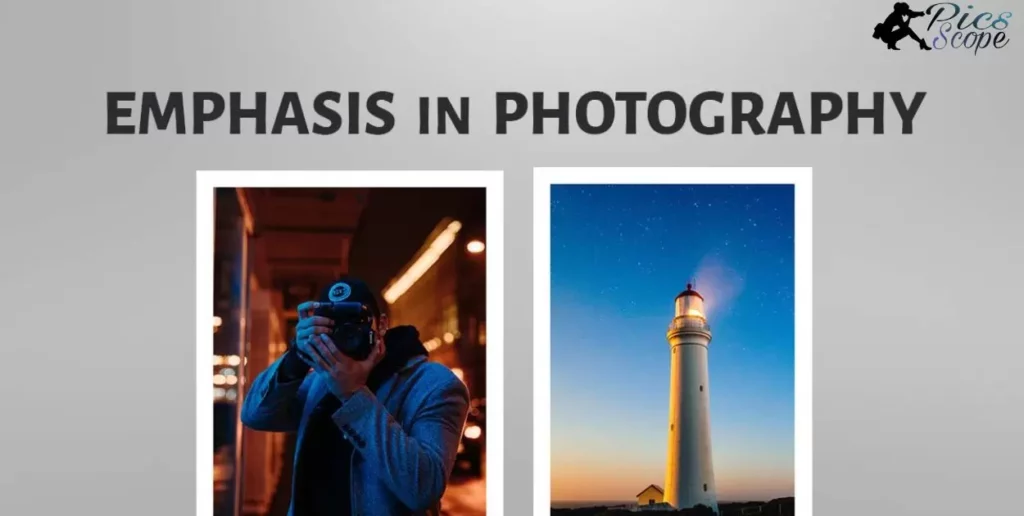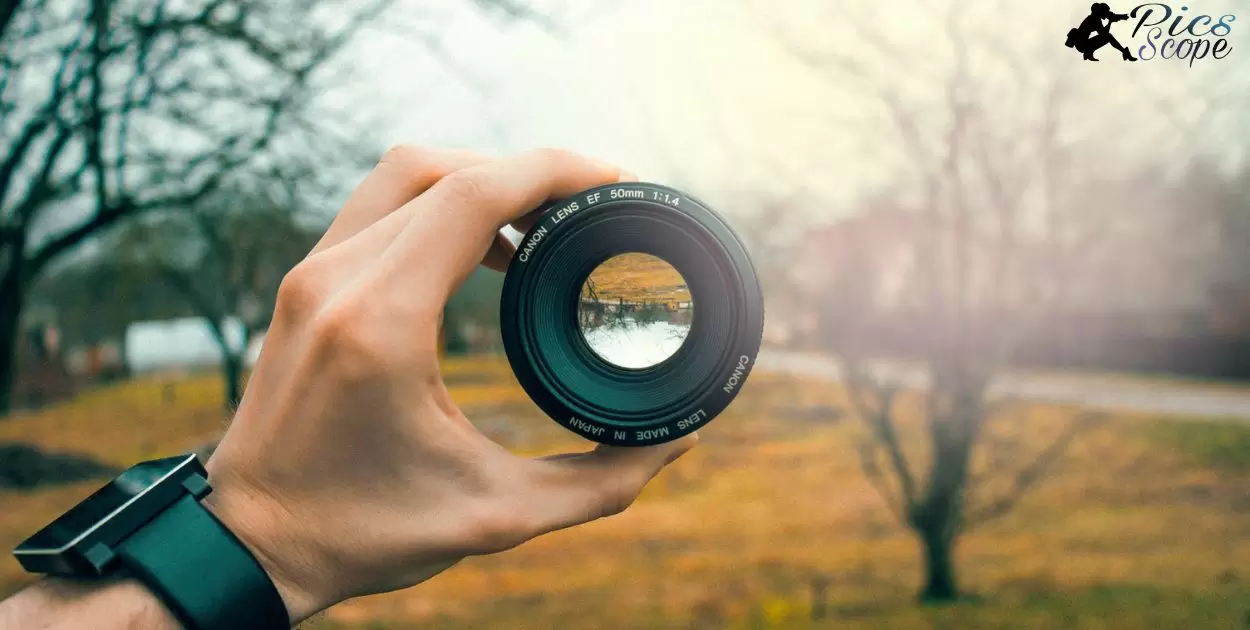Photography is the art of freezing moments through the capture of light, using cameras to preserve scenes and subjects. It involves skillful manipulation of equipment and composition to convey emotions or document the world.
What Is Emphasis In Photography? Ever wondered how a photograph can draw your attention to a specific subject or detail? Emphasis in photography is the answer, guiding viewers to notice what the photographer intends, using techniques like selective focus and contrast.
Emphasis in photography involves various techniques, such as selective focus, contrast, and framing, strategically highlighting elements to control the narrative. By directing attention to specific details, photographers can add depth and impact to their visual storytelling.
Examples Of Emphasis In Photography
In photography, emphasis is about making certain elements stand out. One way is using selective focus, where one part is sharp, and the rest is blurry. Another method is through contrast, highlighting differences in color, tone, or brightness. These techniques guide the viewer’s eye and add interest to the photo.
Framing is another example of emphasis. Placing a subject within a frame, like an arch or window, draws attention to it. Emphasis helps photographers tell a clear and compelling visual story by directing the viewer’s focus to key elements in the image.
Contrast In Photography
Photography uses contrast to make elements stand out. It’s the difference between light and dark in a photo. By emphasizing these differences, photographers create visual interest and highlight important details.
Contrast in photography is achieved by combining light and shadow. Bright areas next to dark ones create a striking effect. This technique adds drama and depth to photos, making them more visually appealing.
What Is The Difference Between Contrast And Emphasis In Photography?
Contrast in photography refers to the difference between light and dark elements in an image. It’s about making distinct variations in brightness, enhancing the visual impact. For instance, a photo with a stark contrast between a bright sky and a dark silhouette creates a powerful and eye-catching effect.
On the other hand, emphasis in photography is about highlighting a specific element to draw the viewer’s attention. It involves making certain subjects or details stand out by using techniques like color, focus, or framing.
Movement In Photography
In photography, movement captures the dynamic essence of a scene. Photographers use techniques like adjusting shutter speed to freeze or blur motion, creating a sense of energy in the image.
To convey movement, photographers often opt for faster shutter speeds to freeze action or slower speeds to introduce a deliberate blur. This deliberate manipulation of time enhances the visual storytelling in photographs, making them more engaging and alive.
Unity In Photography
Unity in newborn photography means bringing elements together to create a harmonious and cohesive image. Photographers achieve unity by organizing and arranging visual elements in a way that feels balanced and interconnected.
To create unity, photographers use techniques like repetition, where similar elements recur, and proximity, grouping related elements close to each other. This ensures that all components work together seamlessly, resulting in a visually pleasing and well-composed newborn photograph.
Proportion In Photography
Proportion in photography means getting the size relationships right. It’s about making sure objects in the photo have the right scale. When the sizes of elements are balanced, the photo looks harmonious and pleasing to the eye.
Photographers use proportion to create a sense of balance and visual appeal. It’s like putting together a puzzle where each piece fits just right, ensuring that no part of the photo feels too big or too small.
Balance In Photography
Balance in photography means arranging visual elements to create stability and harmony in an image. It’s like a visual scale, making sure no part feels too heavy or empty. Achieving balance can be done through the careful placement of subjects, colors, and textures in a way that feels pleasing to the eye.
There are two main types of balance in photography: symmetrical and asymmetrical. Symmetrical balance is like a mirror image, with elements on one side mirroring the other. Asymmetrical balance, on the other hand, involves different elements that have equal visual weight, creating balance through their arrangement rather than identical content.
Space In Photography
Photography uses space to frame and organize visual elements. In simple terms, space refers to the areas around and between subjects in a photograph. Photographers control space by arranging subjects and objects to create a sense of balance and harmony in their images.
When you understand space in photography, you can compose shots that feel open or intimate. It’s about how subjects relate to the surrounding areas. By playing with space, photographers guide the viewer’s eye, telling a story or emphasizing specific details.
Emphasis Picture Meaning
In photography, emphasis gives special importance to certain parts of a picture. It’s like a visual spotlight, making specific elements stand out. Photographers use techniques such as focus, color, and framing to direct viewers’ attention where they want.
The meaning of emphasis in pictures is about guiding the viewer’s eyes to what matters most in the image. It’s a way to tell a story or convey an emotion by making certain details more prominent.
Emphasis Through Focus Photography
In photography, emphasis through focus is when a specific part of a photo is made clearer and sharper than the rest. This technique directs the viewer’s eyes to the in-focus area, highlighting its importance in the composition.
Photographers achieve emphasis through focus by adjusting the camera settings or manually focusing on the chosen subject. This simple yet effective method allows them to create visually striking images by drawing attention to key elements, making the photo more engaging and impactful.
How Photographers Can Emphasize Form?

Photographers emphasize form by adjusting angles and lighting. They choose the right perspectives to highlight the shape of the subject. Controlling shadows and highlights adds depth and brings out the three-dimensional aspects of the form.
To emphasize form, photographers experiment with different light sources. Direct light enhances the contours, while diffused light softens edges. Adjusting the camera angle and playing with shadows are practical ways
10 Tips To Emphasize Your Subject In Photography
Use a wide aperture to create a shallow depth of field, making your subject stand out against a blurred background.
Think In Thirds
Photography uses the Rule of Thirds,a simple guideline dividing an image into a grid of nine equal parts. This technique involves placing the main elements along the gridlines or at their intersections, creating a balanced and visually pleasing composition.
When you Think in Thirds, you’re essentially training your eye to frame shots with this rule in mind. By doing so, you enhance the overall appeal of your photos, making them more engaging and capturing the viewer’s attention effortlessly. It’s a straightforward yet powerful approach to improve your composition skills and elevate the impact of your photographs.
Think About Colors
Colors play a crucial role in our daily lives. They have the power to evoke emotions and influence our moods. Whether it’s the calming effect of blues and greens or the vibrancy of reds and yellows, colors impact how we perceive the world around us.
When you think about colors, consider the way they can be used to communicate messages and create visual interest. From the warm hues of a sunset to the cool tones of a winter landscape, colors enhance our experiences and add a dynamic element to the world.
Use Strong Contrast To Highlight Your Subject
To make your subject stand out, use strong contrast. Contrast is achieved by placing dark elements against light ones or vice versa. This simple technique immediately draws the viewer’s eye to your subject, creating a bold and impactful image.
Experiment with different lighting conditions to create strong contrasts in your photos. Play with shadows and highlights to emphasize your subject and make your images visually engaging. Using strong contrast is an effective way to add drama and focus to your photography.
Isolate Your Subject Through Negative Space
Create powerful photos by isolating your subject through negative space. Negative space is the unoccupied area around your subject in an image. By using negative space, your subject stands out, grabbing attention without distractions.
To achieve this, keep the background simple and uncluttered. Ensure your subject has space around it, allowing the viewer’s focus to naturally gravitate toward what matters most in your photo. Simple backgrounds and thoughtful composition make your subject shine through, creating visually striking and impactful photographs.
Create A Bokeh Effect With A Shallow Depth Of Field
Enhance the visual appeal of your photographs by mastering the art of bokeh. Bokeh refers to the aesthetically pleasing out-of-focus areas in an image, often created by a shallow depth of field.
This technique adds a dreamy and captivating quality to your photos, isolating your subject from the background. To achieve this effect, use a wide aperture setting on your camera, such as f/2.8 or f/1.4, to create a shallow depth of field. The table below outlines key considerations and steps for achieving a beautiful bokeh effect in your photography.
| Aspect | Description |
| Aperture Setting | Choose a wide aperture (low f-number) to reduce the depth of field and create a pronounced out-of-focus background. |
| Lens Selection | Use a lens with a large maximum aperture, such as a prime lens, to maximize the bokeh effect. |
| Distance from Subject | Position your subject relatively close to the camera and ensure a significant distance between the subject and background. |
| Background Elements | Opt for background elements with bright highlights, such as lights or reflective surfaces, to enhance the bokeh effect. |
Mastering the bokeh effect adds a touch of artistry to your photography, making your subjects stand out in a visually stunning and professional manner. Experiment with different lenses, apertures, and compositions to discover the unique bokeh style that complements your creative vision.
Use Leading Lines To Direct The Eye
Leading lines are a powerful tool in photography that guide the viewer’s gaze through the image. These lines, whether straight or curved, act like visual pathways, directing the eye towards a specific point of interest. By using leading lines, photographers create a natural flow that enhances the composition and draws attention to the focal elements.
Incorporating leading lines into your photos can be as simple as capturing a road, fence, or river. These lines subtly guide the viewer’s eye, adding a dynamic element to your composition. Experimenting with leading lines helps create visually engaging photos by providing a clear and effortless path for the viewer to follow.
Find A Frame Within Your Frame
Discovering a frame within your frame is a photography technique that involves identifying interesting elements in your surroundings. Look for natural borders, like tree branches, archways, or windows, to frame your subject. This technique adds depth and focus to your composition.
Experiment with different angles and perspectives to find unique frames. A well-chosen frame within your frame directs attention to your subject, making your photo visually compelling. Use this simple yet effective technique to enhance the impact of your compositions.
Look For Something Different
In photography, seek uniqueness. Don’t follow the crowd; explore the extraordinary. Find subjects and angles that stand out from the usual, capturing moments in a fresh and distinctive way.
Look for something different” is the key. Break away from the ordinary and discover beauty in the unexpected. Experiment with various perspectives, colors, and compositions to create images that grab attention and offer a new view of the world.
Look For Textured Surfaces To Add Weight To Your Subject
When seeking uniqueness, explore textured surfaces to give your subject substance. Textures, like rough walls or textured fabrics, add weight and interest to your photos.
Dare to be different in your photography. Find textured surfaces, whether it’s a weathered door or a patterned background, to bring a fresh and captivating feel to your subjects. Adding texture can elevate your images and make them stand out.
Use A Tight Composition For Personal Emph
When seeking uniqueness, explore textured surfaces to give your subject substance. Textures, like rough walls or textured fabrics, add weight and interest to your photos.
Dare to be different in your photography. Find textured surfaces, whether it’s a weathered door or a patterned background, to bring a fresh and captivating feel to your subjects. Adding texture can elevate your images and make them stand out.
How To Bring Emphasis To Your Photography Subject?

To bring emphasis to your photography subject, use techniques like selective focus. This means choosing the main subject and making it sharp, while other elements remain blurred. It immediately guides the viewer’s eye to what you want them to notice.
Another effective method is to use contrast. Make the subject stand out by placing it against a background that contrasts in color or brightness. This simple trick instantly draws attention, making your photography subject the focal point.
Negative Space
Negative space in art refers to the empty or unoccupied areas surrounding the main subject. Artists use negative space intentionally to enhance the overall composition. Instead of focusing solely on objects, negative space complements the subject, creating balance and visual interest.
In photography, negative space plays a crucial role. It provides breathing room around the main subject, allowing viewers to appreciate the simplicity and clarity of the image. Photographers often use negative space to emphasize the subject, making it stand out distinctly against the uncluttered background.
Shallow Depth Of Field
Shallow Depth of Field means that only a small part of the photo is in sharp focus. It’s like when you take a picture, and the background looks all blurry. This happens when you use a low f-stop number on your camera, letting in more light and creating that cool effect.
Photographers use Shallow Depth of Field to make a subject stand out from the background. It’s great for portraits or when you want to highlight one thing in the photo. So, next time you see a picture with a blurry background and a clear main subject, that’s the magic of Shallow Depth of Field at work!
Leading Lines
Leading lines are like visual pathways in a photo, guiding your eyes to the main focus. They can be straight or curved, such as roads, fences, or even a row of trees. These lines create a sense of movement and draw your attention naturally.
Photographers use leading lines to enhance composition and create a dynamic feel. By incorporating these lines, they guide viewers through the image, making it easy to follow and engaging. It’s a simple yet effective technique that adds interest and structure to photographs.
Contrast
Contrast in photography is when you put different elements next to each other to make them stand out. It’s like pairing light and dark or bright and dull to create visual interest. Photographers use contrast to make certain details pop and grab the viewer’s attention.
In simple terms, contrast adds spice to photos by emphasizing differences. Whether it’s colors, textures, or brightness levels, playing with contrast helps create visually striking images that capture the eye. It’s a powerful tool that photographers use to make their pictures more dynamic and engaging.
Texture
Texture is how something feels or looks like it might feel when you touch it. In photography, it’s about capturing the surface qualities of objects. When you take a photo of a rough tree bark or smooth glass, you’re showcasing the texture in the image.
Photographers use texture to add depth and interest to their photos. By emphasizing the way light plays on different surfaces, they create visual experiences that make you almost feel the textures in the picture. It’s a way to make the viewer more connected to the photograph by engaging their sense of touch through the visual medium.
Colors
Colors are the vibrant hues that surround us every day. They come from light, and we see them in objects, nature, and even in the sky. Red, blue, green – each color has its own personality and can evoke different feelings.
In art and design, colors play a crucial role. They communicate emotions and set the mood. Whether it’s a cheerful yellow or a calming blue, colors have the power to influence our perceptions and create a visually appealing world.
What Is Composition?
Composition is how elements are arranged in a photograph. It’s about organizing visual elements, like subjects and background, to create a pleasing and impactful image. You decide where to place things in the frame.
Good composition helps viewers understand the photo easily. It’s like telling a story with your picture. So, think about where things go to make your photo look just right!
FAQ’s
How does emphasis work in photography?
Emphasis directs the viewer’s focus to specific elements within a photograph, making them stand out.
What techniques are used to create emphasis in photography?
Selective focus, contrast, and framing are common techniques that photographers use to achieve emphasis in their images.
Why is emphasis important in photography?
Emphasis adds depth and impact to visual storytelling, guiding viewers to notice and engage with the intended focal points in a photograph.
Conclusion
Grasping the concept of What Is Emphasis In Photography? is crucial for crafting compelling and meaningful images. By strategically highlighting specific elements through techniques like selective focus and contrast, photographers can guide viewers to the intended focal points.
This not only adds depth to visual storytelling but also ensures that the audience engages with and appreciates the photographer’s artistic choices. So, next time you pick up your camera, remember the power of What Is Emphasis In Photography? to transform a simple image into a captivating visual narrative.







